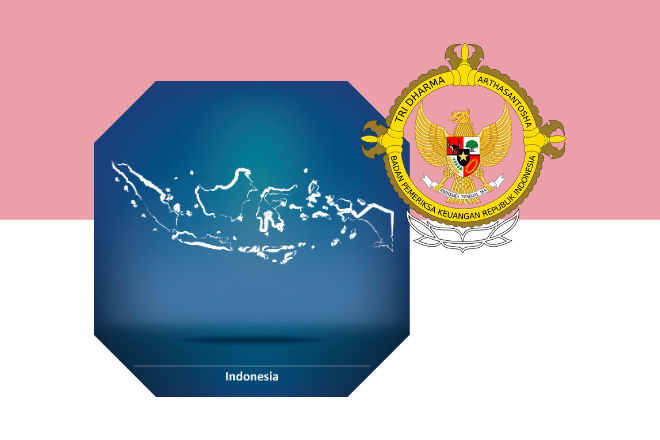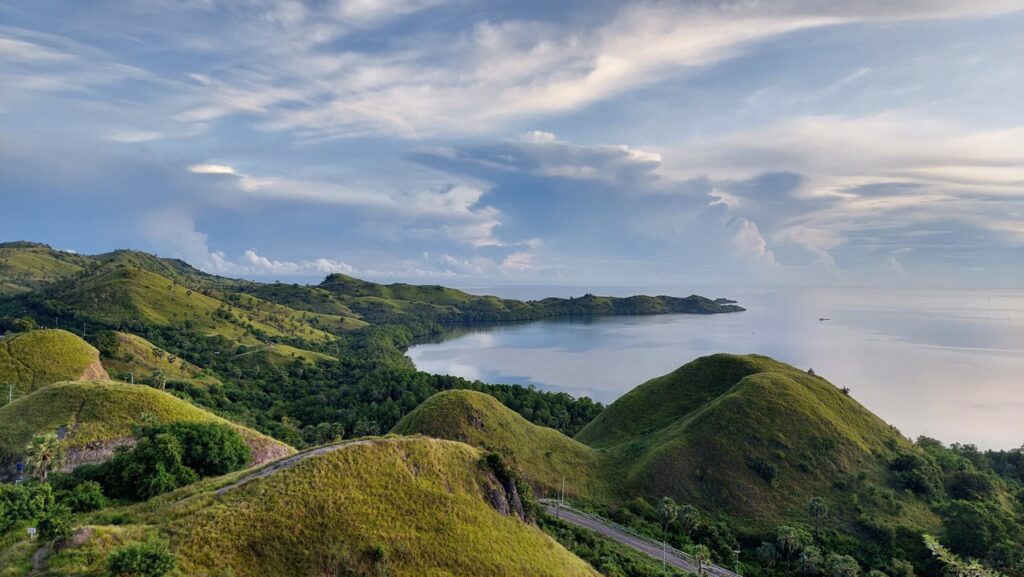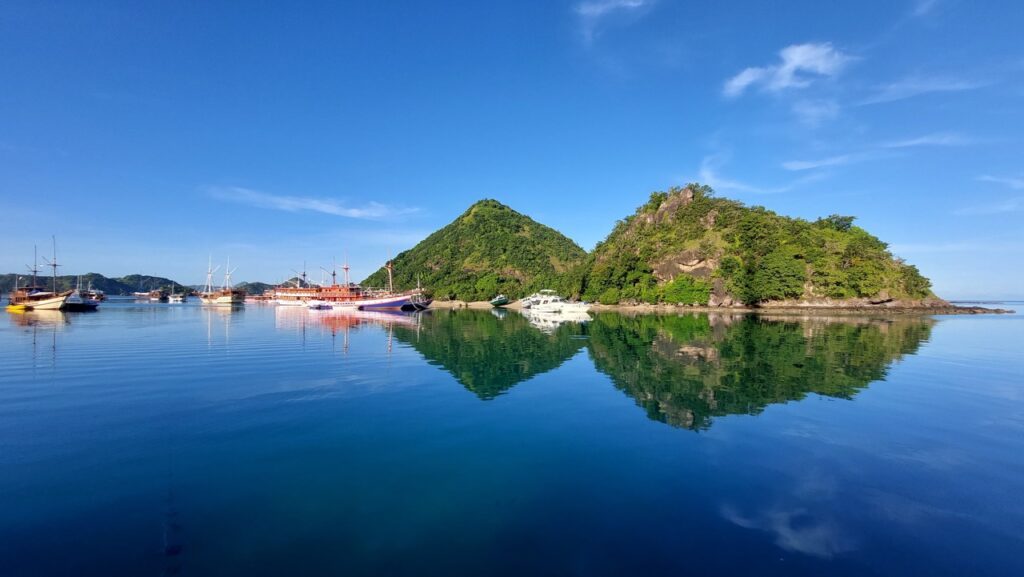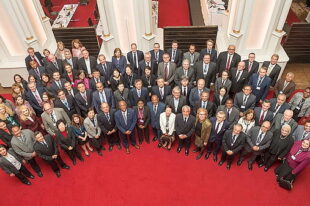Staying Afloat—Sinking Cities and How SAIs Can Contribute to Mitigating Sea Level Rise and Climate Change

Authors: Candra Hapsari Susilo and Tri Marhendra Rahardyan, SAI of The Republic of Indonesia
Introduction
Being one of the earth’s largest archipelagos, Indonesia’s territory consists largely of bodies of water, with coastal cities scattered across 17.000 islands. However, many of those islands might just disappear in the coming years. As early as 2005, Indonesia’s Marine and Fisheries Research Agency (KKP) reported that 24 islands the size of a football field had sunk. The National Research and Innovation Agency (BRIN) has also shown that land subsidence in the coastline of Indonesia’s main island is happening at an unprecedented rate, ranging from 2 cm/year to an alarming 11 cm/year in certain parts, including its capital city and economic center, Jakarta. BRIN has forecasted as many as 115 islands will have sunk by the year 2100, 92 of which are caused by the rising sea levels. With most of its infrastructure located along the coastline, Indonesia suffers a higher risk of loss and damage. Thus, staying afloat has become one of our main concerns.

Causes: Rising Tides, Sinking Cities & Countries
In recent years, the effects of climate change are becoming more apparent, with the average global temperature has rapidly increased during the last two decades. This has resulted in a considerable decrease in the planet’s ice sheets and increasing global thermal water expansion, both of which are responsible for the rising sea level. Rising sea-level is attributed as one of the main causes of disappearing land masses. Research conducted in coastal areas by Indonesia’s BRIN has shown that sea-level is rising at the rate of 2.9mm per year, not far behind the global average of 3.2 mm per year. Aside from that, satellite imaging from NASA’s Sentinel-3 has also shown apparent changes in biome and terrain shape caused by rising sea levels all over the globe in the last decade. With that in mind, Indonesia, coastal cities, and Small Island Developing States (SIDS) all around the globe are threatened to sink in the coming years.
According to recently released data from the World Meteorological Organization (WMO), global average sea levels have risen faster since 1900 than over any preceding century in the last 3,000 years. WMO warns, that even if global warming is “miraculously” limited to 1.5 degrees, the planet will still see a sizeable rise in seawater levels. Saltwater intrusion can decimate jobs and entire economies in various industries such as agriculture, fisheries, and tourism. Furthermore, sea level rise will potentially damage or destroy vital infrastructure, such as transportation systems, hospitals, and schools. The danger is especially acute for some 900 million people living in coastal zones at low elevations which constitute one out of every ten people on earth.
The United Nations (UN) emphasized that mega-cities on every continent will face serious impacts, including Lagos, Bangkok, Jakarta, Mumbai, Shanghai, London, Buenos Aires, and New York. Devastation is already evident in many parts of the world, noting that rising seas have decimated livelihoods in tourism and agriculture across the Caribbean. Sea level rise and other climate impacts are already forcing people to relocate in island countries such as Fiji, Vanuatu, and the Solomon Islands. A call to action to determine the future of the planet is needed.
Government and UN Efforts
In 2015, 196 countries agreed on a legally binding international treaty on climate change, the Paris Agreement. Its goal is “to limit the temperature increase to 1.5°C above pre-industrial levels.” According to the UN’s Intergovernmental Panel on Climate Change (IPCC), crossing the 1.5°C threshold will possibly result in much more severe environmental impacts, including drought, rainfalls, and heatwaves, some of which we’ve seen around the globe today. The core of the Paris Agreement is each country’s National Determined Contributions (NDCs). The NDCs are each country’s commitment to realizing the goals of the global treaty. The document outlines individual countries’ climate action plans, targets, and strategies to reduce their greenhouse emission to halt the rapidly increasing global temperature.
The UN has also set sustainable development goal (SDG) of 13: Take urgent action to combat climate change and its impacts. To achieve this goal, UN members, especially affected countries, should implement various agendas, including strengthening resilience to climate-related disasters; integrating climate change measures into national policies; improving education to raise awareness of climate change; and promoting mechanisms for raising capacity for effective climate change-related planning and management.
As part of the SDG implementation, the Indonesian Government has established a policy, namely “Strengthening The Environment and Improving Resilience Against Natural Disasters and Climate Change”. This policy is regulated as National Priorities 6 in the National Medium-Term Development Plan (RPJMN) 2020-2024. The National Priorities are outlined into three policy groups, namely (1) improving the quality of the environment; (2) increasing resilience against natural disasters and climate change; and (3) applying a low-carbon development approach. According to indicators set on National Priorities 6, the government intends to decrease the level of vulnerability in coastal areas and small islands. The area of coastal settlements that are prone to accretion due to changes in the sea level is predicted to increase to over 18,480 km2 by 2045. Thus, the government wishes all of the efforts in RPJMN will prevent and/or reduce climate change-related disasters.
SAIs and INTOSAI Contributions
To realize the 2030 Agenda of mitigating the effects of climate change, governments of participating countries must work hand-in-hand with all available parties, including SAIs. Indonesia has shown its full commitment by submitting the Voluntary National Report (VNR) in 2017, 2019, 2021, and expectedly, 2023. VNR is a report on progress in implementing and follow-ups of strategies for achieving the 2030 Agenda for Sustainable Development and the Sustainable Development Goals (SDGs). In support of that, the SAI of Indonesia (BPK) has collaborated with the government of Indonesia by conducting a review of Indonesia’s VNR to ensure reports are accurate and true to the evidence. BPK has also contributed by conducting several audits on Indonesia’s preparedness and implementation of SDGs. BPK has also dedicated several audits on Indonesia’s SDGs strategy and practice. In 2024, BPK plans to audit National Priorities 6 as a collaboration audit between BPK’s central office and regional office. The audits are expected to provide valuable recommendations for the government and related parties to enhance resilience against natural disasters and climate change.

Additionally, INTOSAI’s Working Group on Environmental Auditing (WGEA) has stated that environmental and climate audits are reportedly on the rise. Its triennial survey has shown that out of the 71 SAIs that responded, climate change adaptation has become the most popular topic in 2021- 2023, a stark contrast to the previous survey results which did not even show climate change as one of the top ten topics chosen. These results indicate that SAIs are gradually becoming alert to the issue. Reportedly, SAIs have a growing interest in auditing countries’ compliance with multilateral agreements on the environment, especially the Paris Agreement on climate, followed by the UN Agenda 2030 and the UN SDGs. Subsequently, most of the SAIs can also use the SDGs as audit topics, and/or criteria for auditing climate change in their respective areas. The survey results have also shown that in the future, SAIs foresee an increase in activities revolving around the SDGs, especially SDG 13 on taking urgent action to combat climate change and its impacts. However, SAIs still face some challenges in conducting environmental audit. Issues such as lack of expertise, data accessibility, and less practice of field visits are some of the main concerns. But in all, this has shown that countries around the globe have recognized sea level rise as an issue.

Conclusions
Sea-level rise because of climate change is a very real threat to coastal cities and SIDS all around the globe, including Indonesia. Local governments and SAIs both play a part in facing the issue of climate change. By following the UN-agreed goals as well as the multilateral agreements, we might just have a chance to combat or lessen the effects of climate change. SAIs have an important role in ensuring accountability, and transparency on how each nation responds to this impending disaster. Consequently, the current issue shows a growing need for INTOSAI to initiate cooperative audits regarding this theme, especially for countries in the same regional area. SAIs would greatly benefit from having specific guidelines to follow regarding climate change audit. Raising awareness and mitigating risks are essential in preventing further losses and damages.





